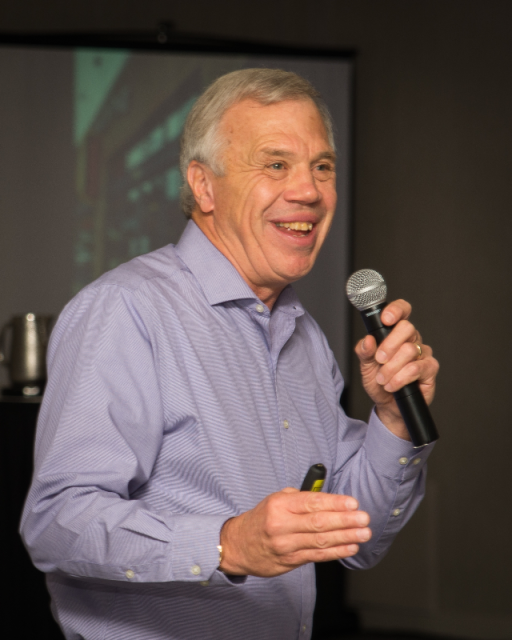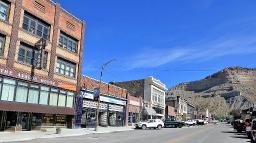
Jim Diers is driven by a passion to get people more involved in their communities and in the decisions that affect their lives. Over the past 40 years, he has served as a grass roots community organizer, community developer, and founding director of Seattle’s Department of Neighborhoods. Jim now shares the lessons from that work in his courses at the University of Washington; in international consulting through the Asset-Based Community Development Institute; and in his book, Neighbor Power. He has been recognized with an honorary doctorate from Grinnell College and as the Public Employee of the Year by the Municipal League of Martin Luther King County.
State or Province:
country:
USwhat are your gifts and talents?:
why do you want to join abcd in action?:
Helper, Utah - The Little Town That Could

It was early morning as we drove from Moab to Salt Lake City during a recent vacation in Utah. I was tired, so I exited the highway when I saw a sign advertising coffee in a town with the intriguing name of Helper. I emerged two hours later with a deliciously effective cappuccino and an inspiring story of a community revitalizing its town by building on its strengths.
The town of Helper grew up around the railroad. Soon after the track was completed in 1882, Helper was designated as a passenger and freight terminal. The railroad facilitated coal mining in Carbon County, and Helper became the hub for services needed by the mining camps. By 1925, Helper boasted 157 businesses including several hotels. The town’s 1600 residents spoke 27 different languages as the railroad, mining and service sectors attracted diverse immigrants.
Helper’s economy waxed and waned over the years along with the fortunes of the coal industry. Increasing mechanization of the industry cost some jobs but the real hit began in the 1970s with the closure of mines and a major railroad facility. By the end of the century, only three of the 30 mines were still operating. The hotels and most of the other storefronts were boarded up. Helper was no longer a hub. Some referred to it as “a living ghost town.”
Rather than dwell on their misfortune, the citizens of Helper focused on their strengths. They realized they had an abundance of underutilized resources that could be mobilized to revitalize their town. These included their rich history, intact architecture, beautiful natural environment, affordable real estate, good highway access, a passenger train stop, and most importantly, a strong sense of community and a belief in what it could accomplish.
Early on, there was a feeling that Helper’s history could be the basis for a new tourism industry. A small museum was created in one room of the civic auditorium in 1964. The museum committee also commissioned the statue of a 20-foot-tall miner, “Big John,” which was erected in front of the civic auditorium and can’t be missed as you enter the town.
The initial museum proved to be so successful that, in 1985, the City Council voted to make the four-story Railroad Hotel available for a greatly expanded Western Mining and Railroad Museum. The museum includes the facsimile of a coal mine, a miniature working railroad, exhibits on the mining camps with their baseball teams and brass bands. and themed rooms that house a company store, schoolroom, doctor and dentist offices, miniature locomotives, dinosaur fossils, a Veterans Honor Hall, and the shady side of Helper with its distilleries and brothels. The museum continues to be a major tourist attraction.
The museum also has a large lot displaying mining and railroad equipment including the town’s namesake, a helper engine. Trains climbing the steep grade from Helper up to the Wasatch Plateau on their way to Salt Lake City required an additional “helper” engine. These were stationed in Helper.
The town had a few artists, but its art scene really took off when David Dornan, who was born in Helper, returned in 1999. Dornan was an art professor at the University of Utah and realized that Helper could be the perfect place to establish a studio. With some colleagues, he purchased a two-story former hotel on Main Street for $16,000. The first floor was renovated as studio space which was made available to his students. In exchange for five hours per week helping with the renovation, students were each given their own small bedroom rent-free. There are 15 of these bedrooms in the former brothel on the second floor of the hotel. Some of the students have stayed in Helper and established their own studios.
The growing art scene combined with affordable housing and picturesque scenery attracted more artists to Helper. Historic Main Street buildings received badly needed renovations and now serve as art galleries, studios and living quarters. The Rio Hotel was reborn as the Rio Theatre for the performing arts. Artists have beautified the town with murals including a large mosaic that was created in collaboration with children and depicts the historic railroad. Artwork in the windows of otherwise vacant buildings makes the town seem more alive. Art-based events such as First Friday Gallery Strolls, the Butch Cassidy Film Festival, and the Helper Arts, Music and Film Festival attract locals and visitors alike to the Main Street.
Fortunately, there is an understanding that Helper’s historic architecture is also one of its core strengths. Main Street facades have been preserved so that it looks much like it did 100 years ago. Three buildings have been listed on the National Register of Historic Places. The vintage Sinclair and Conoco gas stations have been beautifully restored. The miners’ cottages at the town entrance have been preserved and all received a fresh coat of paint due to a recent community initiative.
Community members have worked hard to make Main Street as attractive as possible. Already in 1973, local Girl Scouts cleaned up a blighted lot in the heart of town and over the next few years created a park for their community’s elders. More recently, benches and brightly colored Adirondack chairs were installed throughout downtown to encourage pedestrians to relax and feel at home. Forbidding spaces between buildings were converted into attractive laneways. Cindi Curry, who owns the coffee shop I patronized, took it upon herself to install and maintain planters along Main Street. A local non-profit, The Helper Project, added decorative trash cans. In addition to the art events noted earlier, the Helper Outlaw Car Show and Cruise, Farmer’s Market, Lunatic Triathlon, and the official Utah Christmas Town celebration with its electric light parade help bring people to Main Street.
Yet another local asset is Helper’s natural environment. The community understands that Mother Nature has blessed them with much more than coal. The Price River runs through Helper which is situated at the mouth of the canyon. The town enjoys stunning views of nearby Book Cliffs, Balance Rock and Steamboat Mountain.
Trails have been developed on abandoned rail lines that connected Helper to former mining camps. These are now popular with hikers and mountain bikers. A new business in Helper provides trail information and guided tours. It also rents bicycles as well as rafts, kayaks and paddleboards for the river.
The community developed a trail along the river to make this amenity more accessible. The River Walk leads to a beach, a playground of boulders (another local asset), and a sandstone labyrinth. A suspension bridge crosses the river. Old concrete structures on the route are painted with street art. Benches are strategically located under shade trees. What a delight to experience this serene environment and its rich bird life only a block from Main Street.
As part of a much larger project to revitalize the river, Helper Middle School students removed invasive plants from the banks and replaced them with native species. A new community group, the River Helpers, now waters and maintains the vegetation.
In 2017, Mayor Lenise Peterman invited the American Institute of Architects to bring its Sustainable Design Assessment Team to Helper. They facilitated the development of a community-driven action plan that engaged ten percent of the town’s 2200 residents over the course of three days. Goals of the plan include attracting young families, stewarding the local environment, and moving from an energy-based economy to a destination-based one.
Many of the specific recommendations have already been implemented and others are in the works. These include initiating an entrepreneurial training program, creating pop-up businesses in retail stores, enhancing public spaces, developing a wayfinding system, and becoming certified as a Dark Skies community,
There is still much to be done, but my walk down Helper’s Main Street was truly inspiring. In addition to the art galleries, theatre and museum, Main Street now boasts restaurants, salons, and antique stores. The Vintage Motor Company with beautifully restored motorcycles and classic cars now occupies the first floor of the renovated Lincoln Hotel. More buildings were being renovated even at the early morning hour when I was there. The planters, seating, laneways, art, and decorative trash cans and the posters publicizing a variety of events demonstrated how much people care for their community. Gateway Lanes continues to thrive and my guess is that no one bowls alone in Helper.
Not only is Helper’s revitalization building on its own unique resources, but the process has been community driven. City Hall only has 10 full-time and seven half-time positions, so the community has done most of the work themselves. Helper, both the engine and the town, remind me of one of my favorite children’s books, “The Little Engine that Could.” Despite the steep climb, that engine kept chanting, “I think I can, I think I can” and it finally succeeded. As Mayor Peterman puts it, “If a community has hope, there’s no stopping it. If you have hope we can do these things, we can get them done.”
